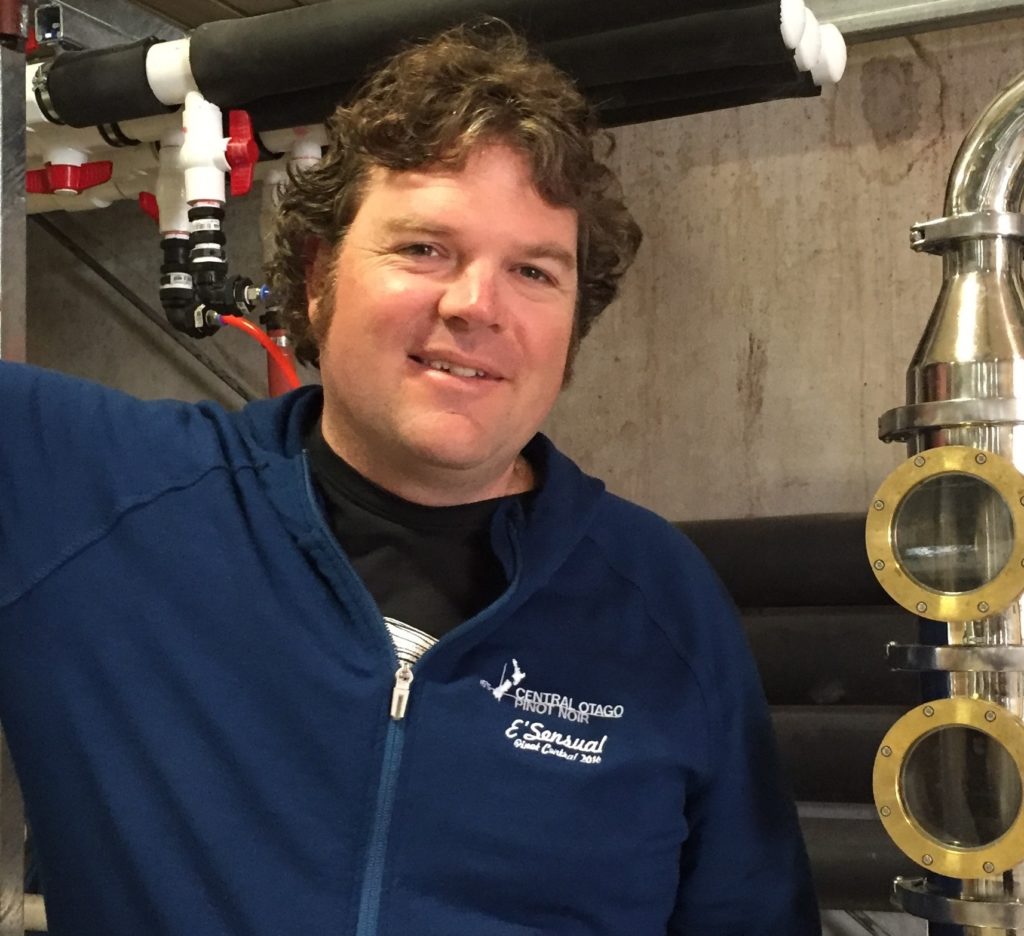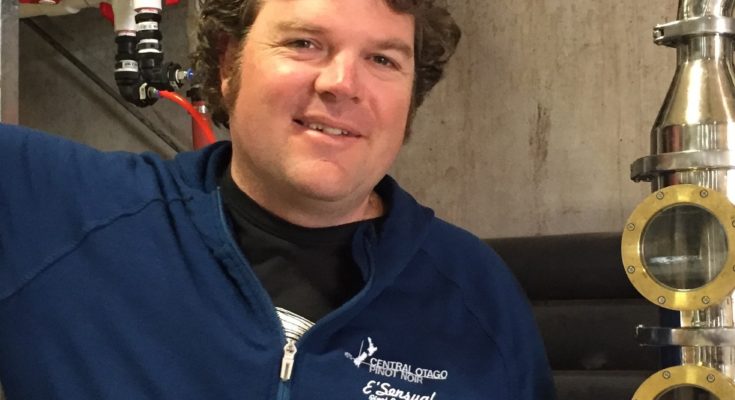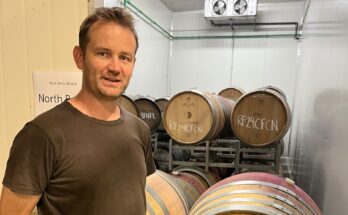
An occasional series where we corner the best of New Zealand’s winemaking talent. In the spotlight today: Matt Dicey.
So, has your world changed a bit since Foley? Yes and No. I’ve got a boss these days – a couple of bosses, it’s a changing world. I have a Head Winemaker who oversees the whole of the Foley Group. But at the same time, nothing’s really changed. They bought us because we were doing a good job, and they want us to continue doing a good job. Ash has been down a couple of times and seen what we’ve been up to, done a couple of blending sessions – things of that nature. And we’ve been up to Martinborough for Pinot workshops and things like that. There’s been some nice positives.
Have you had extra investment? More barrels – as many barrels as you want? Funnily enough we were actually doing really well previously, so the winery was never under-invested in. You’re always fighting for additional tools and toys, and bits and pieces, but over the years we’d really upskilled and got all of the bits that we really needed in the winery, so from that perspective there hasn’t been much investment there. The one bit that we’re looking at is actually investment here in the Cellar Door.
We’re looking at expanding the restaurant. We built this in 2003, and it was a combined restaurant and café in the same space. And that was great but almost instantly too small. Then we built a dedicated Cellar Door in 2012. And now we essentially need all of the space that’s here as Cellar Door space; AND we need around a 70-seat restaurant. We get somewhere around 60,000 visitors to the Cellar Door a year – a good number. It’s a lovely days outing from Queenstown … and it’s so different from Queenstown – a different offering. The starkness of the landscape, the aridity; is a contrast to what you have there.

I’ve certainly noticed the range of wines – the single vineyard wines, more nowadays. That’s an evolution. Our first vintage was ’98, and we actually made some single vineyard Pinots in 2000. We’ve been making single vineyard wine for a very long time. There’s definitely been a bit of an explosion. To be fair, those early ones we made were probably ahead of the game. More from the fact that with a single vineyard wine, you’re trying to capture the essence of the place and trying to highlight what it is about that site that’s unique. In 2000 our vines were only 6 to 8 years old, so, yes, they were individual and what we saw as the typicity of that site. Now, in hindsight, they were very youthful expressions – our single vineyards now are typically up to 24-25 years old. And I’ve been here for 21 years, so have had some experience in working with those vineyards, and understand a little bit more about what comes off those sites. And have a better understanding of what we are trying to achieve.
And am I correct in saying that your family were involved in finding vineyard sites? Yes, my father was intricately involved in that establishment – the vineyard that he and my Mum set up – Long Gully – that’s our oldest vineyard – it was planted in ’92, and it’s the second oldest vineyard in the Cromwell basin. The vineyard next door, which was Olssens, was planted in ’91, and the Elms vineyard of Felton Rd, were all purchased in 1990. Robin comes from a background of viticulture and contracting – he was up in the Bay of Plenty managing kiwifruit vineyards. Obviously, it’s a vine, so quite similar; and back in South Africa we had a family farm and couple of hundred acres of grapes.
So coming down here was really a chance for him to reconnect with vines and growing grapes, and making wine. But because of the experience he had in Katikati he was able to help others. So between him and my brother, they’re probably responsible for a third of all vineyards in Central Otago. All of our early and original estate vineyards were put in by my father. We are seeing some of those early planting form the 90s replaced as those early ones were done on there own roots, and now with phylloxera in the region we’ve been replanting. We love old vines and the character and consistency they give, but as well protecting ourselves at the same time. It’s not done, but we’ve done massive inroads over the years – we’re at about 70% of grafted material here in Felton Road.
Do you have any concerns over climate change? Yeah, most definitely. There has been a shift. We continue to have warmer and warmer seasons but also more variable seasons. It’s that variability – we are a little island in the middle of a couple of large oceans, and we’re a long way south. We’re close to the driest part of New Zealand. Typically we only have something like 300-350 mm of rain a year, and that’s the average right through the year.
Access to water is a huge thing, and irrigation. For us it’s all about trying to keep vines alive, not really growing big canopies. Keeping the vines alive between rainfall spells at the end. ’18 was an extraordinary vintage. You talk to the old school farmers around here and they say you have to go all the way back to ’52 to get somewhere as hot and dry as 2018 was. That stands out as a supremely hot vintage, but for us it’s that variability and the more extreme events. The dry is drier. The wet is wetter. The windy is windier. All of those extremes seem to be more extreme.
We are very responsible water users. Everything is drip irrigated; everything is managed really really well.
Our water right is actually a mining water right from 1881, but you have to be fit for today – that you are aware of how much water you’re using, economically, and the water balance in our vineyard is actually a pretty good equation.
Also, we use bio-char in our vineyards. Activated carbon. We’ve built a couple of bio-char ovens and we utilise the charcoal that produces to help sequester carbon within the soil. That really helps us with the incredibly poor soils, typically with organic content of around 1 and 2%. Really poor moisture holding, so adding activated carbon into the soil as a compost, it really helps lock in more water, nutrients as well as putting carbon into the soil.
Do you see winemaking as a scientific or an artistic endeavour? I come from a science background. I’ve got a degree in Chemistry, a Masters in Applied Science, so my background is Science. And I’ve spent my entire winemaking career learning to engage my artistic side and learning how to not have the scientific side as the driving force. And more from the perspective of the freedom – having the scientific background gives you an understanding of what you’re doing; so you’re not making decisions from a point of ignorance. But you are confident that the decisions you are making aren’t also going to be deleterious for wine quality. It’s lovely to have a background in science and an understanding of the underlying factors and drivers of what you’re doing. But the much more interesting part to me is the artistic and creative endeavour; and the longer you do it, the more artistic and creative you are. You know how to do it, but can you do it with flair? It’s not about forgetting the science, but it’s engaging the creativity. It is a lovely blend of both.

Is there a moment during your year where you have that shift to creativity? Vintage is the creative time for us. It is the time where all of it condenses into those moments; and the decisions you make are the decisions that have ramifications for the entire season. They are all crystallised during Vintage.
And, Ceres, your other project? That’s one of the beauties of winemaking and viticulture, is the longer you do it, the more it comes down to site. And the more you like having control over the elements. Having our own place, and a site that is a unique site with a lot of interest is a real driving factor for me. Around that ‘What does the future hold – what does the boundaries of the future look like?’ We’re not alchemists in the winery, we are very much caretakers. Wine isn’t alchemy – we start with whatever goodness there is within the grape and you take that through to the finished product. So if you’ve got a site with interest and potential, then the potential at the far end is really exciting.
Ceres is our home project, on our block; and my brother and I both purchased bare land in 2001 and set about converting that to vineyards in ’02. And it’s been a slow process for us of being able to afford to do little chunks at a time – in ’02, ’08 and then last year. And the final bit of the development will happen this coming season. They’re expensive beasts to undertake – vineyards – and that’s allowed us to think about how we’d like to do that as well.
For example, my sister-in-law is an artist and our labels are really cool, individual. Wine is an individual thing, like music – it’s your personal taste.





One Comment on “Winemaker Series – Matt Dicey”